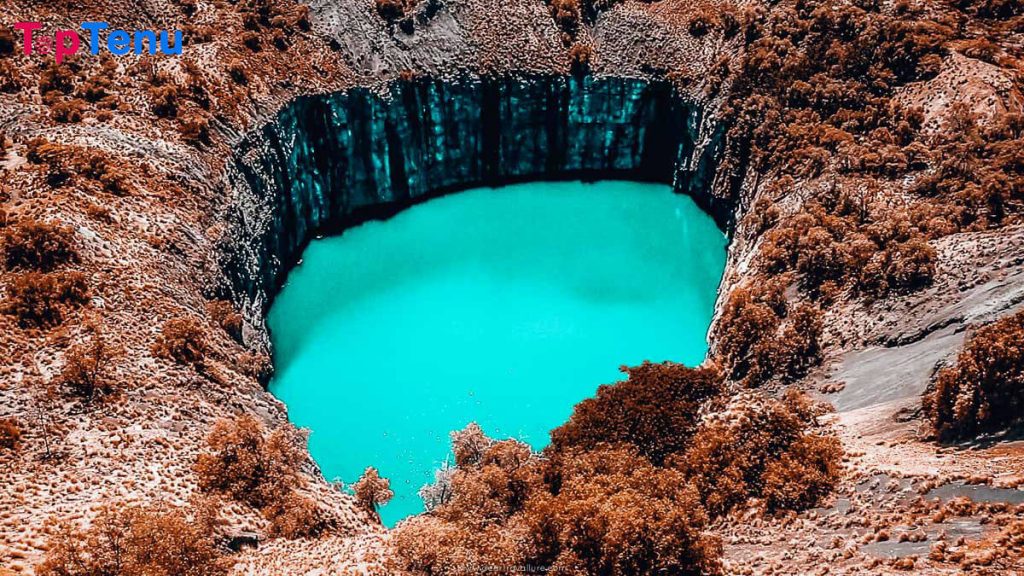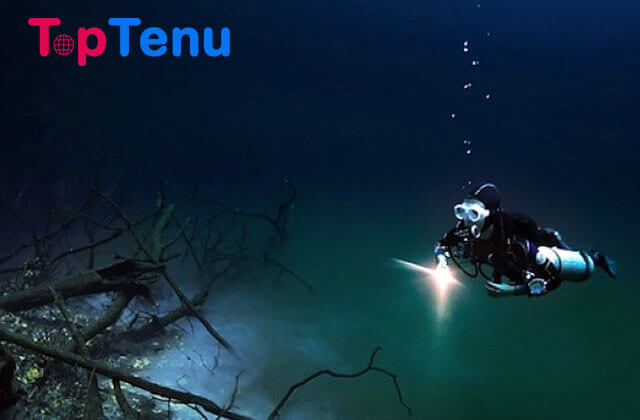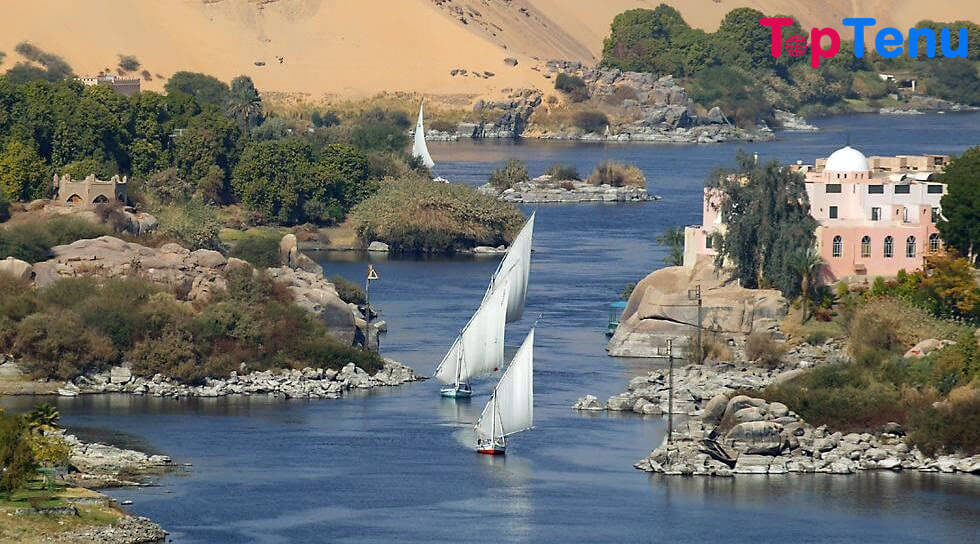8 Incredible Underwater Discoveries Found in the Ocean
8. Egypt’s Sunken Tomb
Egyptologists Maria Nilsson and John Ward stumbled across the find of a century when they followed a 20 foot deep rivet between the pyramids, and unlocked the secrets of a completely hidden tomb.
The pit was initially thought to be just a stone quarry that fueled the great pyramids, but upon closer investigation, it became apparent that there was much more there than met the eye!
As Nilsson and Ward waded into the water, they discovered a strange opening but couldn’t explore further as the area was completely submerged.
After pumping out the water and clearing the entrance, they found a secret that the Egyptians tried very hard to obscure; a hidden underground tomb full of countless remains.
The search revealed broken pottery as well, suggesting that the souls in the graves were given trinkets to see them safely to the afterlife.
The Egyptians buried their significant dead with gifts designed to help them make the transition as painlessly as possible, which begs the question; who were these people?
Could the slurry of human remains contain bones of prominent people who’ve been lost forever, like the great Queen Nefertiti? Right now, we’ve only scratched the surface of what secrets Egypt’s sunken tomb holds. Who knows what we might find out!
7. Stone Age Relics
When Swedish divers uncovered Stone Age relics in the Baltic Sea in 2014, they opened up a glimpse of the past that we rarely enjoy. 11,000 years ago, Swedish nomads discarded the relics in the sea, where the Baltic’s unique water composition was able to preserve them.
The Baltic Sea is brackish, meaning that it’s a mixture of fresh and salt water, and it contains very little oxygen. There’s also a tremendous amount of organic material at the bottom.
All of these factors contribute to an ideal environment for old relics to survive. Most Stone Age relics are too deteriorated to examine realistically, so this find was an important way for researchers to learn more about our early ancestors.
The relics were found 52 feet below the surface, making it easy for divers to sift through the bottom and uncover more.
The relics include animal horns, flint tools, pieces of wood, harpoons, and even the skeleton of a creature that went extinct in the 1600s; a domestic animal known as an auroch, which might have resembled our modern cattle today.
These bones can help us understand what sort of creatures shared the land with early humans and give us a more focused look into their day-to-day lives.
Reated: 11 Most Invasive Aquatic Species in the World
6. Israel’s Ancient Atlit-Yam
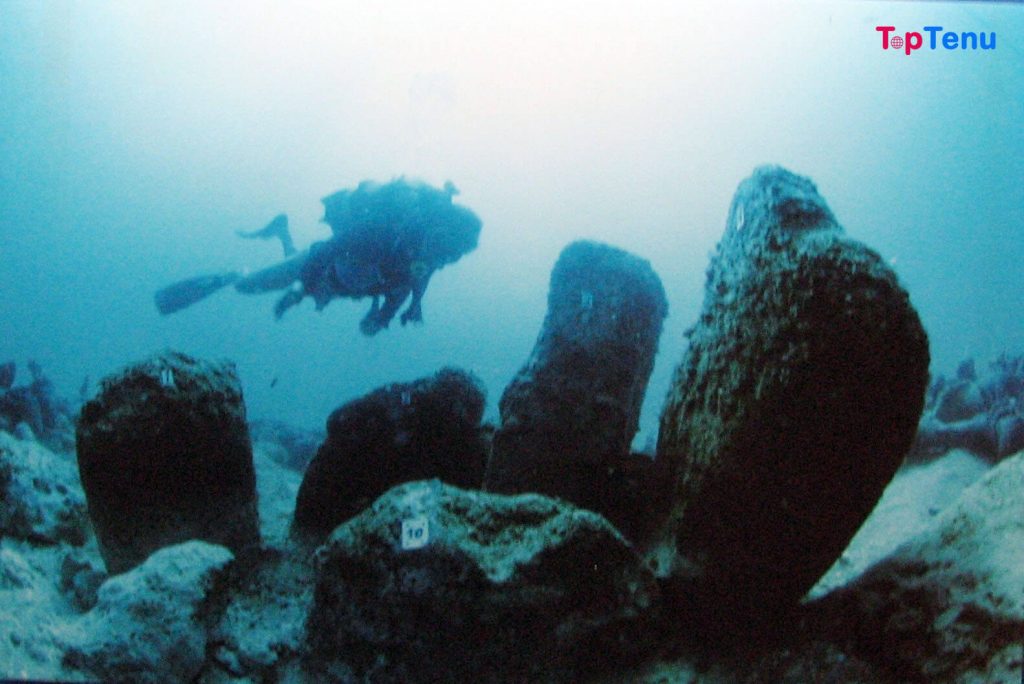
Atlit-Yam is perhaps Isreal’s most fascinating ancient city, which is saying something when you consider the fact that this richly cultured country is home to Jerusalem.
What makes Atlit-Yam so unique is that it’s an exceptionally well-preserved neolithic village submerged in the Mediterranean Sea.
Archeologists first stumbled across Atlit-Yam in 1960, and they began researching it in earnest in 1969, pulling tons of artifacts from the bottom of the ocean.
The settlement contains houses, wells, everyday items, and pottery, and at least 60 skeletons, but there’s clearly more to be found.
As Atlit-Yam is only 40 feet below the surface, it’s easy for diving teams to excavate the site, giving us an unparalleled peek into the daily life of our Neolithic ancestors.
One puzzle remains; what exactly happened to Atlit-Yam? How did the small village sink? Some experts think that she fell victim to a mega-tsunami, but others aren’t so sure.
As more and more relics are pulled from the site, perhaps we can learn exactly what fate befell the citizens of Atlit-Yam.
5. Lake Titicaca’s Sacrificial Ground
Lake Titicaca straddles the border between Peru and Bolivia and is one of the most fascinating places on the planet, as well as one of the most mystical ones.
Ancient sun and moon temples honoring Incan deities have been unearthed around the perimeter of the lake and on the small islands inside of it. Still, perhaps the most exciting artifacts come straight from Lake Titicaca herself.
The bottom of Lake Titicaca is full of ancient relics, precious gold coins, and small stone statues that suggest that it clearly was used as a ritualistic place to appease the gods.
In addition to the gold and offerings, divers uncovered llama bones, but no human remains, as are commonly found in other areas.
The Incan sea mother, Mama Cocha, is a significant deity in Incan folklore, and it’s speculated that the llamas were sacrificed to her in exchange for protection and fertility.
One of the most curious items pulled from the waters of Lake Titicaca was an andesite box, 14 inches long, containing a series of offerings.
The box’s fine Incan craftsmanship kept it watertight for 5 full centuries, and the contents were found totally intact and dry!
Reated: 12 Most Bizarre Shoreline Beach Finds
4. Otherworldly Bones
A freak flood revealed a gristly surprise in January of 2014 when a Mexican village on the Yucatan Peninsula found itself awash in bones and freakish skulls that looked anything but human.
The bones came from one of the area’s cenotes, an underground cavern common in the area.
Mexico’s cenotes are created when underground limestone deteriorates and groundwater floods into the leftover space. They’re popular places to snorkel and dive, and most of the time, you’ll catch some pretty impressive rock formations inside.
This time, the cenote was full of more than just rock formations. It was clearly ground zero for human sacrifice. The indigenous Mayan people were famous for their human sacrifices, and this cenote, known as Sac Uayum, was the sad, final resting spot for plenty of unlucky souls.
According to local lore, the Sac Uayum was presided over by a feathered serpent with the head of a horse, which spent its time terrorizing local villagers when it wasn’t bathing in the cenote.
Were the strange bones a gift to the serpent? Curiously, the pit was also full of elongated skulls, as well as the remains of at least a dozen people, begging the question of who or what was killed to appease the ancient gods.
3. Japan’s Atlantis
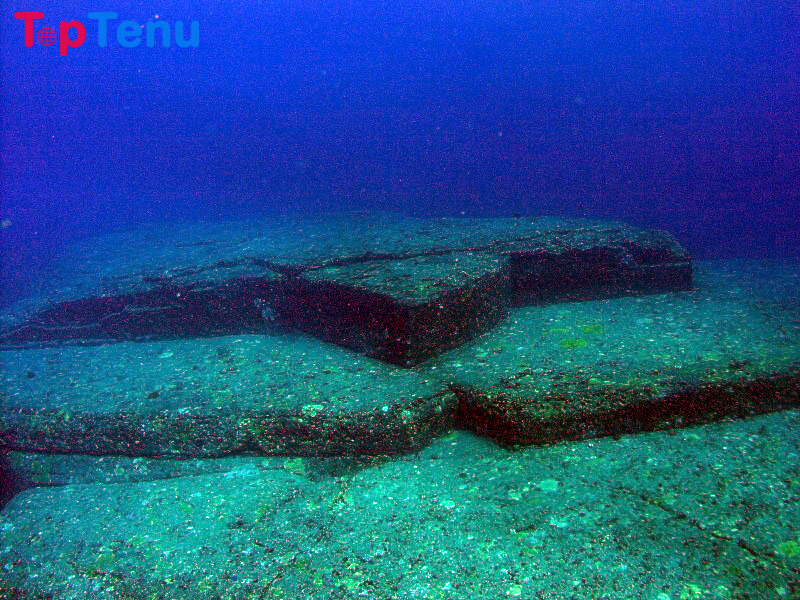
The Yonaguni Monument, also known as Japan’s Atlantis, is one of the most puzzling underwater pyramids ever discovered. Speculation swirls around the pyramid, specifically how something so massive could have been so fully submerged and remain intact.
Some experts think that an ancient earthquake 2,000 years ago forced the Yonaguni Monument straight into the sea. Others believe the pyramid to be upwards of 5,000 years old and perhaps have been even forged by aliens.
The stepped pyramid is 82 feet tall, and the structure is perfectly pyramid shaped, so most experts believe that the Yonaguni Monument is a human creation.
There are some that argue that it could have been naturally formed by oceanic tides, earthquakes, or other activities deep within the sea bed.
Human Made or natural, the Yonaguni Monument is undoubtedly one of the underwater wonders of the world.
2. Treasure
From The Kush Kingdom Sudan’s Kush Kingdom was a thriving empire that conquered Egypt for a number of years. Like the Egyptians, the Kushites buried their dead pharaohs in pyramids and held many of the same traditions regarding seeing their people safely to the world beyond.
Incredibly, some of Sudan’s most amazing pyramids are underwater. Whether due to natural changes in the environment or if they were built that way, we may never know, but there’s definitely gold and treasure to be found in the murky depths of the submerged pyramids.
When archeologist Pearce Paul Creasman plunged the depths of one such pyramid, he uncovered gold and the remains of long-lost statues.
The tomb may have belonged to Nastasen, a Kushite ruler who governed between 335 to 315 B.C.E. Since much of the tomb is underwater, it’s going to take a long time to fully grasp the scope of all of the treasures lost in this sunken pyramid.
What’s more, there could be plenty of others right in that region of Sudan or in other parts of the country. Since we don’t know as much about the Kushites as we do about the Egyptians, taking a dip in these underwater pyramids could be a great way to find out.
Reated: Top 10 Bizarre Animal Carcasses That Washed Ashore
1. An Ice Age Marvel
Hidden between the Portuguese islands of Sao Miguel and Terceira is an ice age marvel that’s lurked beneath the waves for an astonishing 20,000 years.
This incredibly preserved deepwater pyramid was discovered in the early part of this century by Diocleciano Silva, and it raises enormous questions about how our ancestors constructed it.
This pyramid is well below the surface, making it difficult to probe, but using GPS, researchers are able to map out the scope, and the thing is massive! It’s as long as a football field and nearly 200 feet tall.
Additionally, it’s oriented by cardinal points and is perfectly constructed. The pyramid seems completely aligned with the summer solstice, and other structures in the area support the idea that the pyramid was created to celebrate that particular event.
Its sheer age is baffling, leading some to speculate that it wasn’t even created by humans at all; but by either one of our predecessors or even ancient aliens.
One thing is for absolute certain; the Portuguese pyramid has only just started sharing its many secrets with the world.
We may never know the whole story! Thanks for Reading! Would you rather jump on in for a long dip in Egypt’s sunken tomb or go toe to toe with the horse headed serpent of Mayan lore? Let us know in the comments section below.


